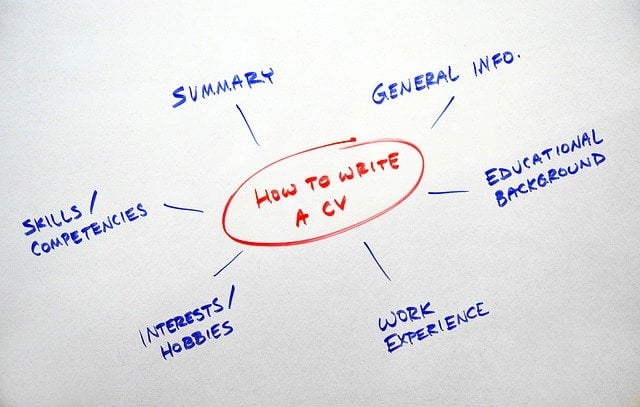In this article, you’ll learn everything starting from the meaning of a Resume, the purpose & importance of a resume, the difference between resume, curriculum vitae, and biodata, how to make a resume, and everything else about a Resume.
If you are searching for a new job? The first thing you need for a successful job search is a Resume. Before you send out your first job application letter, you need to prepare a document in which you have to list all of your work experience, qualification, career summary, skills, and accomplishments. Known by many names, a resume, curriculum vitae(CV), and biodata is the first document desired by the employers to filter the most suitable candidates from job applicants.
Anybody can make a resume. You don’t need special qualifications to write a resume. However, making a good resume that leaves an impact is the real deal.
A resume is not just about entering your details on a piece of paper. Anybody can do that. You get just one opportunity to leave an impression on the hiring manager. In this article, you’ll learn how important that opportunity is.
A recent survey reported that over 92 percent of job seekers copy paste content downloaded from the internet or borrow from a friend or relative’s resume. Never do that!
Technology is evolving faster than you can imagine. Recruiters no longer waste their time browsing through job applications.
An applicant tracking system (ATS) filters irrelevant and poor-quality resumes. So, if you are still wondering why your job applications are getting rejected. Now you have the answer. If you do not know how to make an impactful resume. I’m sorry to say, you do not stand a chance.

Wanna learn how to make a resume? Let’s start!
What is a resume?
A resume is also known as curriculum vitae, or Biodata is a document created by an individual to showcase and share personal information like background, qualifications, work experience, skills, and accomplishments with potential employers, job contracts, or for academic purposes.
What is the importance of a resume?
The primary purpose of a resume is to showcase your skills, work experience, education, and other information to a potential employer and secure an interview with the hiring manager. Sent along with a cover letter, a properly formatted resume ensures maximum visibility and preference over other candidates.
In simple words, don’t expect an interview call without submitting a resume first. If you do not know how to make a resume, It’s time to learn how to make a resume first.
But before we start breaking the process of making a professional resume for you. You need to understand the basics and uses of a resume, biodata, and curriculum vitae (CV).
Do you know what is the difference between a resume, biodata, and a curriculum vitae?
Let’s find out!
We’ll try to make it as simple as possible. A resume is a 1-3 page document used for sharing personal information like work experience, education, skills, and achievements with potential employers.
While a curriculum vitae (cv) is a detailed document (a detailed version of a resume) primarily used for academic purposes or jobs. A curriculum vitae (cv) can be as long as 3-5 pages.
A biodata format, on the other hand, is primarily an alternative for a resume in Asian countries like India, Pakistan, Bhutan, Nepal, and Bangladesh. Generally, a 1-3 page document, biodata format contains more personal information gender, language, nationality, or sometimes, age, caste, religion (if used for marriage purposes).
Yes, a significant population in India and neighboring countries use a biodata for marriage purposes.
How to format a resume?
A poorly formatted resume can cost you your dream job. If you are looking to get hired quickly, Consider reformatting your resume. A perfectly formatted resume will pass the applicant tracking system. It will properly show off your skills and experience. It will help the recruiters to understand your resume and invite you for the job interview.
A poorly formatted resume will be instantly rejected by the recruiters.
There are three types of resume formats.
- Reverse chronological resume format
- Functional resume format
- Combined resume format
The most commonly used resume format is the Reverse Chronological resume format. Reverse Chronological resume format lets you showcase your most recent job experience or education.
Functional resumes are suitable for job seekers who want to work in skill-based jobs. A functional resume should be the ideal choice if you have an employment gap on your resume or if you want to make a career switch.
The combined resume gives equal weightage to both skills and experience. Choosing an apt resume format is vital in a successful job search. The resume formats provide you an opportunity to present your skills, experience, and qualifications in the most presentable ways.
What to include on your resume?
- Contact details: your resume must include your phone number, email ID, mailing address (optional), and a professional social media link to your Linkedin profile. Also, if you have a blog or a website that shows off your professional skills or portfolio, include that.
- Resume summary statement: our resume writers strongly recommend using a resume summary statement in your resume. Also known as career objective or resume objective, a resume summary statement highlights your skills, experience, and achievements. The resume summary statement is your answer to the “why should we hire you” question. Make it count.
- Include a list of achievements: Every employer wishes to hire a performer. Someone with a history of accomplishments with a previous employer or at academics is always a preferred choice. including a list of achievements in your resume can help you secure an interview call with the hiring manager. Listing your achievements on your resume is another way of saying that you are a committed and passionate individual. List your achievements and you’ll secure a job sooner than expected.
- List your qualifications: Of course, you know that. Don’t forget to add your most recent and relevant qualifications on your resume.
- Add your Certifications: Adding your most relevant certifications on your resume will give you an upper hand. Some of our candidates often ask us, should they include relevant certifications too? Well, that depends if the certification highlights key skills like a team player, commitments, and learnings. You must include them.
- Highlight your work experience: job seekers get hired for what they bring to the table. Your prior experience proves that you understand the trade and have received the necessary training.
How to make a resume?
- Set Equal margins on all four sides
- Pick 11 or 12pt font and stick to it
- Create a proper resume header with a nice headline and your contact details
- Divide your resume into sections, for example, Resume summary, Work experience, education, etc.
- Use bullet points where necessary
- Be consistent with your Resume
- Do not overstretch your Resume
- Don’t use photos, unless asked for
Now it’s time to start working on your resume! {A Step By Step guide on How to make a resume}
- Resume Title: The first and the most important section on a resume is the title. It includes Name and primary contact details. Often ignored by job seekers, a resume title helps you establish authority in the eyes of the recruiters. Most job seekers only use their name and contact details in the title section of the resume.
We strongly recommend using an appropriate resume title like ”An accomplished HR professional with 13 years of Experience” “An Astute sales professional with 5 years of IT sales experience”
- Resume Summary Statement: A Resume Summary Statement comes Immediately after the title section. A resume summary statement is a brief introduction and an excellent opportunity to summarize your skills, experience, accomplishments, and qualities. Feel free to brag about yourself. Use this section wisely and thank me later. A significant number of job seekers prefer writing a career objective instead of a resume summary statement.
A career objective is an ancient way of telling an employer about your professional expectations and future career plans. Most employers are not interested in finding out what your future plans are. Employers are more interested in finding out what you bring to the table.
Often used by first-time job seekers, the career objective section is already on it’s way to retirement. Even if you are a first-time job seeker, I’m sure you have plenty to talk about your skills, academic achievements, internships, projects, etc.
- Work Experience: Third and the most important section of the resume is Work experience. The work section of the resume includes your employment history along with the duration (starting and leaving date), designation, and a detailed job description.
Pro tip: Don’t forget to list your achievements
- Academic Qualifications & Certifications: Next on your resume, you must list out your academic qualifications and most relevant certifications.
- Personal details: This section of the resume includes your personal details like address (optional), phone number, email ID, languages, Passport details (If required), etc.
Once you are done entering all your details, it’s time to double-check your resume for errors. You may also ask a friend or relative to review the resume.
Check for the language, tone, spelling errors, grammatical errors, and formatting.
Pro tip: always submit a PDF copy of your resume.
And yes, if all of this looks daunting to you look out for a resume writer. An expert resume writer can help you understand the market demands, latest trends, and a way to attract more interview calls.
Call us on 8208407384 to speak with our one of our expert resume writer.
Good luck with your resume.



